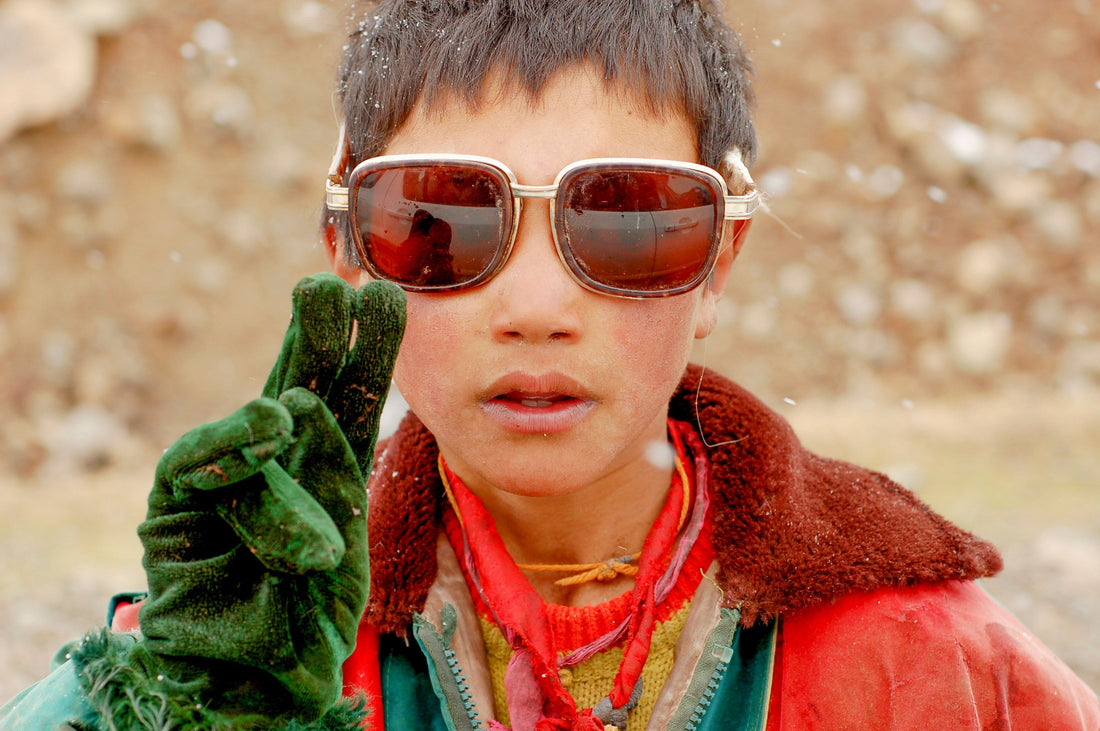
Traditional Does Not Equal Boring—You’re Just Looking in the Wrong Places
Share
What People Think “Traditional” Means
When I tell people that Orientra is rooted in traditional Tibetan jewelry, I often get the same reaction—raised eyebrows, a polite nod, and a hesitant, “Oh… that’s interesting.” And I know what they’re picturing: something dated. Maybe ornate to the point of excess. Probably a piece you’d admire in a museum but never wear out on a Friday night.
That perception couldn’t be further from the truth.
Because here’s the thing: traditional isn’t stale. It’s not frozen in time. It’s not something you inherit and hide away. When done right, it’s one of the boldest, most rebellious creative languages out there.
My Wake-Up Call in Lhasa
Before I co-founded Orientra, I spent years designing for major jewelry houses in London. My job was to predict trends, draw what would sell, and strip away “excess” until a piece felt sleek, marketable, and… utterly lifeless. Beautiful, yes. But empty. That hollowness gnawed at me. I didn’t want to design for status. I wanted to design for meaning. For soul. For that electric current you feel when something speaks to your spirit.
And then I walked into Tsering’s family shop in Lhasa.
What I saw there shook me. Thick strands of coral, rough-hewn turquoise, silver etched by hand with symbols I didn’t yet understand. These pieces weren’t polite. They weren’t subtle. They were alive. Every item felt like it had been pulled from the bones of a story and forged with intention. Jewelry not meant to accessorize—but to protect, declare, bless, remember.
I knew in that moment: this is what I’ve been looking for.
The Lie of “Minimal is Modern”
We live in a design culture that praises minimalism as sophistication. Clean lines. Soft gold. Little nothings you can layer endlessly. And while there’s a place for that, I’ve come to realize: the push for minimalism often erases identity. It flattens culture. It sanitizes expression.
Tradition, especially the kind Tsering brings to the table, refuses to be minimal. It’s maximal in spirit. Not because it’s trying to shout, but because it’s rooted in feeling. These are pieces that carry protection, love, memory, loss, faith—sometimes all at once. That’s not something you whisper. That’s something you wear with pride.
What We’re Really Doing at Orientra
Orientra isn’t just about fusing old and new. It’s about liberating tradition from its stereotypes. We don’t modernize Tibetan jewelry by watering it down—we modernize it by waking it up. By giving it space to move, to evolve, to be seen and felt in new ways.
Tsering’s craftsmanship is fierce, ancient, unshakable. My design instincts are sharp, global, curious. Together, we create jewelry that holds both heritage and momentum. Each piece is a balancing act of history and reinvention—one foot rooted deep in the earth, the other striding into the unknown.
We want people to feel that duality when they wear Orientra. Not just look good, but feel bold. Feel sacred. Feel seen.
Tradition Is Not Tame
So no, tradition is not boring. It’s not old-fashioned. It’s not something to archive or imitate or wear with ironic detachment. It’s alive. It’s fierce. It’s still becoming.
And if we’ve done our job right, you’ll feel that every time you touch an Orientra piece.
Let the world have its minimalist trends. We’re here for the ones who want jewelry with teeth. With fire. With story. With spirit.
Because tradition isn’t tame.
It never was.
—Clara
Co-Founder, Designer, Believer in the Bold
